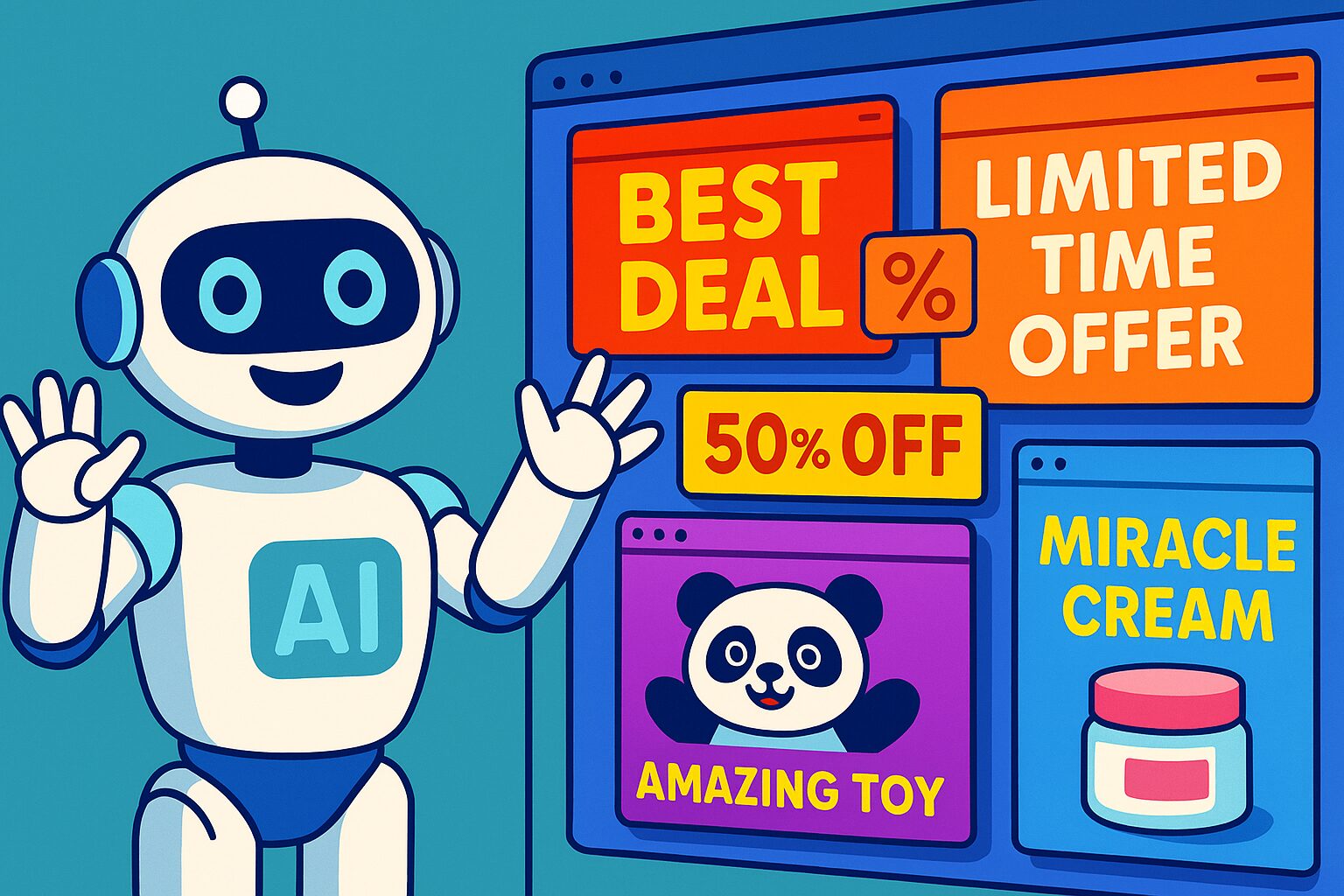AI has turned ad creation into a high-speed game. Now anyone can crank out polished, emotionally charged campaigns like the viral “AI dog ads” or the so-called “Pandy” plush panda that blinks and hugs but in reality, it’s just a cheap toy priced. Users report that what arrives is far from the high-tech magic promised. The highest these items are going for on Amazon is $29.00 but on Ali-Express they are $12.88; this misrepresentation between ad and reality is wearing down consumer trust quickly.
Platforms Play Gatekeeper or Don’t
Big platforms like Google and YouTube largely let AI tuned ads run if someone pays. That “pay and pray” system pushes out low quality or even deceptive ads. Some of these ads have pushed questionable health products and emotional gimmicks with AI voices and fake scenarios, dragging the line between marketing and misrepresentation. In other instances, some ads are prompting invading individual privacy by putting trackers on their vehicles.
The Ethics at Stake: Efficiency, Creativity and Harm
AI ads can be cheaper, faster, and more creative. But they often blur the truth. Some argue that the issue isn’t AI it’s false advertising. AI still makes it easier to blur the line between fiction and truth. Unlike traditional commercials, which exaggerate but are loosely based on reality, AI ads can spin whole narratives that didn’t happen, making them harder to call out.
Laws and Pressure: Regulation and Oversight Creep In
There’s movement to keep AI advertising under control:
- The FTC has insisted there is no “AI exemption” when it comes to deceptive practices in other words, using AI to mislead is still illegal.
- The NAD/BBB’s ad industry group has pushed Apple, Google, Microsoft, and Samsung to walk back overstated AI claims. The FTC also slapped a $25 million judgment on one E-commerce company for false AI promises.
- In the UK, the Liberal Democrats are calling for YouTube ads to face the same rules as TV ads, with pre approval and Ofcom enforcement, especially after ads that used deepfake Martin Lewis to push scams.
- On the self regulation side, guidelines and codes like the ANA Ethics Code, IAB’s Generative AI Playbook, and Utah’s AI Policy Act (which requires disclosure when generative AI is used) are gaining traction.
- In the EU, the AI Act is already in effect (from August 1, 2024), creating a risk based framework for AI systems, and the Digital Services Act is pushing transparency for ads and requiring large platforms to publish ad repositories.
What Has to Change and What Could Go Right
Truthful oversight could turn AI advertising from snake oil into genuine power. But that needs:
- Clearer regulations and enforcement (not just reactive takedowns)
- Human oversight baked into campaign review
- Transparency around when AI is used and what the claims really mean
With those in place, AI could help marketers test ideas faster or personalize responsibly without misleading people.
____________________________________________________________________________________________________________________________________
Shaunta Garth is a Strategic Communications & Visibility Architect specializing in digital storytelling, media strategy and public affairs.
